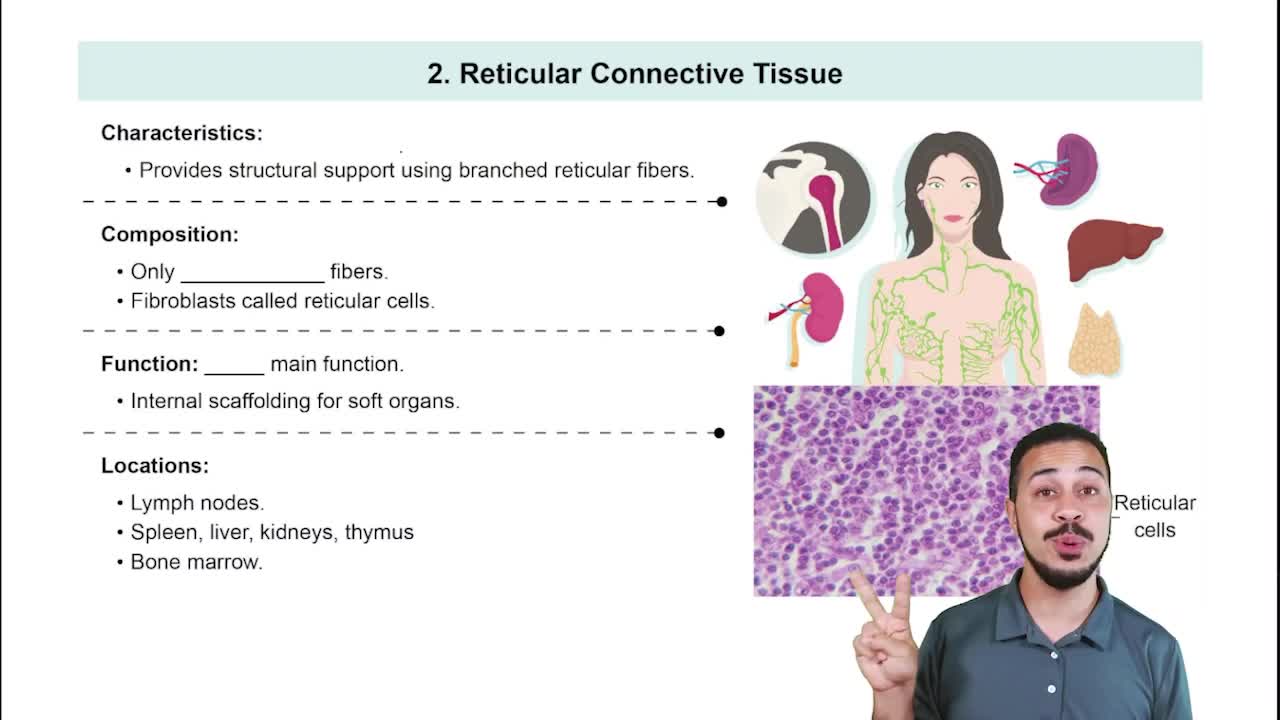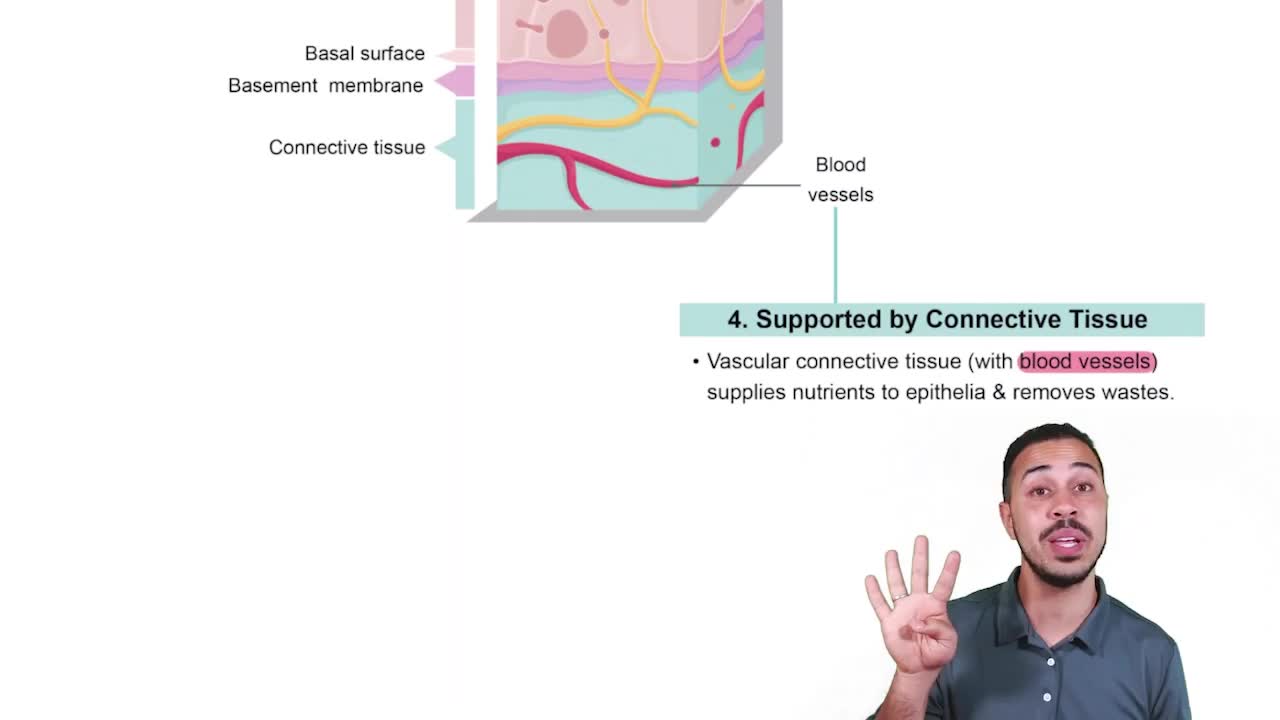Here are the essential concepts you must grasp in order to answer the question correctly.
Scar Tissue Formation
Scar tissue is primarily formed as a result of the body's healing process after injury. It consists mainly of collagen, a protein that provides strength and structure, and is classified as a type of connective tissue. Understanding the process of scar formation helps in recognizing how the body repairs itself and the implications for tissue function.
Recommended video:
Reticular Connective Tissue
Types of Tissue
In biology, tissues are classified into four main types: epithelial, connective, muscle, and nervous tissue. Each type has distinct functions and characteristics. Scar tissue, being a product of the healing process, falls under connective tissue, which supports, binds, and protects other tissues and organs in the body.
Recommended video:
Connective Tissue Characteristics
Connective tissue is characterized by its ability to support and bind other tissues and organs. It is composed of cells scattered within an extracellular matrix, which can vary in consistency from liquid to solid. Scar tissue exemplifies this type of tissue, as it serves to repair and stabilize damaged areas, although it may not fully restore the original tissue's function.
Recommended video:
Characteristic 4: Supported by Connective Tissue
 Verified step by step guidance
Verified step by step guidance


